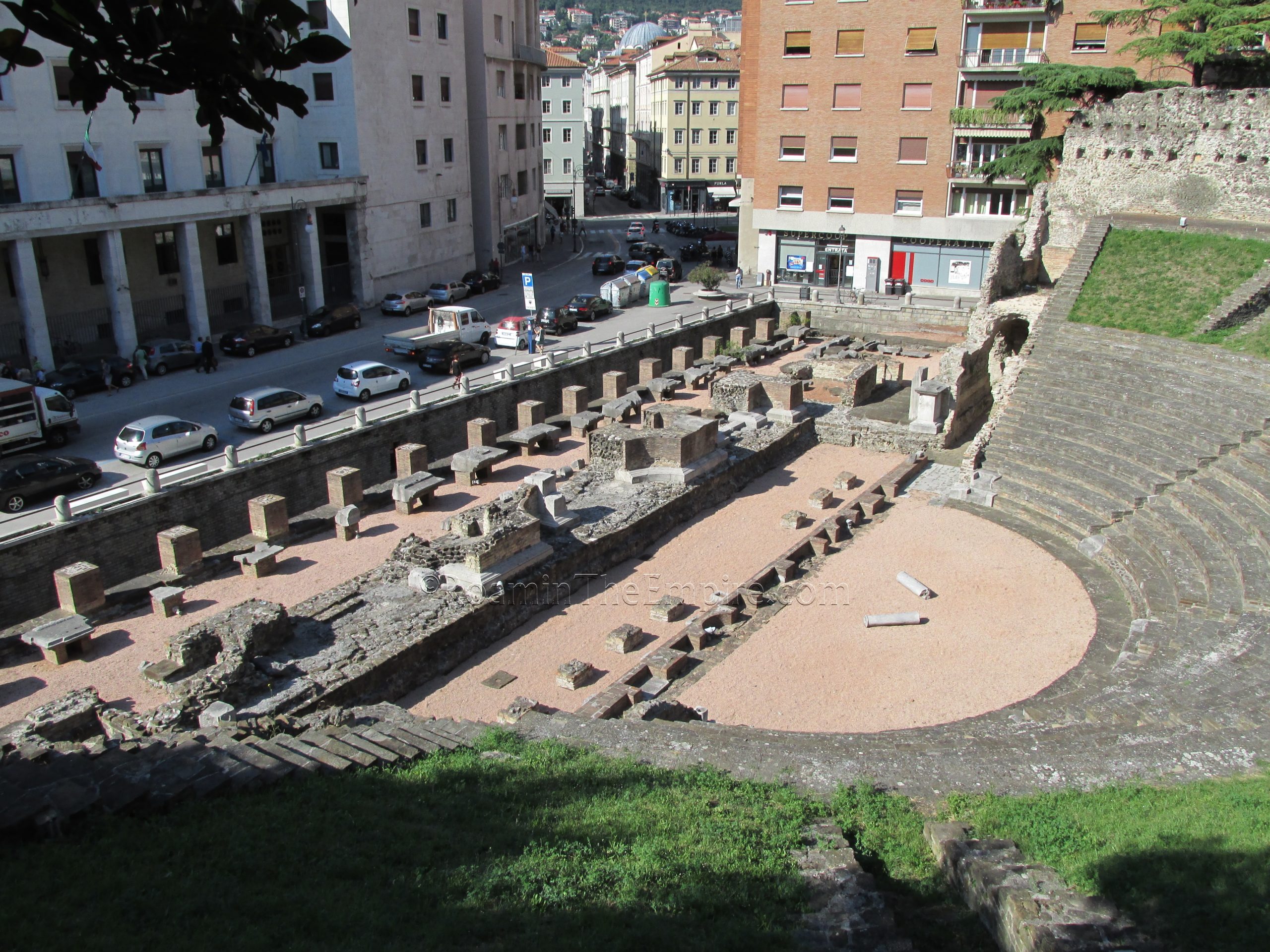
Located on the Gulf of Trieste (the Sinus Tergestinus in antiquity) at the start of the Istrian peninsula, was the ancient city of Tergeste, or Tergestum. Today, the remains of Tergeste are located among the modern city of Trieste, which like its predecessor, now shares a name with the adjacent gulf. The origins of the pre-Roman settlement at Tergeste were a matter of some debate among the ancient authors. Both Strabo and Pliny the Elder attributed the settlement as being Istrian, while Ptolemy claimed the original inhabitants as being the Carni, who may have been either Gallic or a branch of the Veneti. The name too seems as though it may be Venetic in origin, adding some additional weight to that identification. Pomponius Mela, meanwhile, seems to believe that Tergeste was the point to which the Illyrian territory stopped and the Gallic and Italic territory began, though it is unclear to whom he allotted the actual settlement. As such, it is subsequently unclear whether Tergeste was politically part of Venetia or Istria, though they were combined into a single region under the Augustan reorganization of Italy.
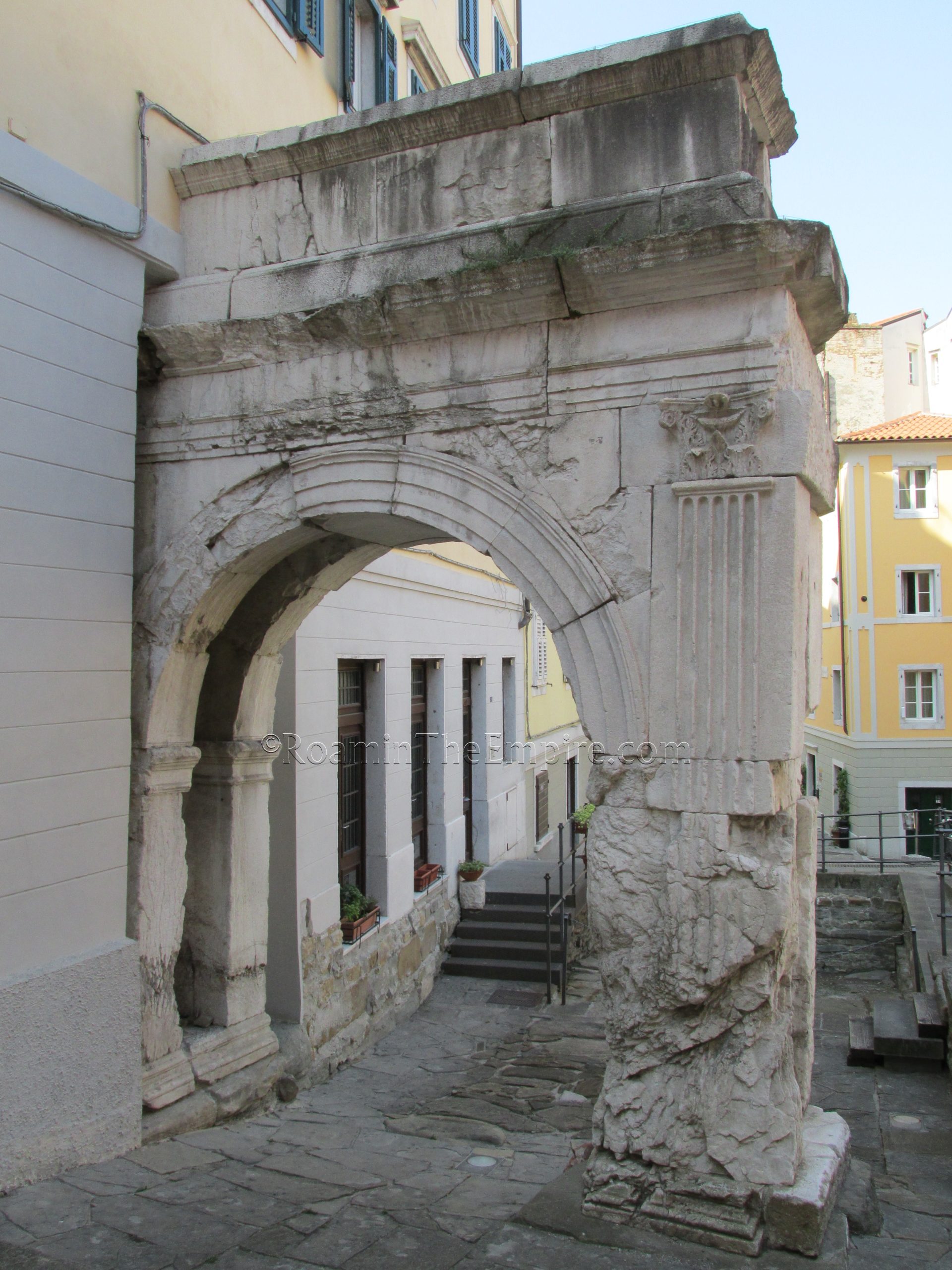
Further clouding the issue of origins, Tergeste doesn’t distinctly appear in the historical record until about 51 BCE, when it is noted as having been attacked by neighboring Illyrian Iapydes people, who had been a foederatus of Rome but had begun a rebellion that year. By this time, though, Tergeste was already a Roman settlement, likely having been conquered around 177 BCE with the rest of the region. A colony was established in the middle of the 1st century BCE, either by Julius Caesar in 46 BCE or perhaps under the second triumvirate following the Battle of Philippi in 42 BCE. A decade later under Octavian in 32 BCE, the city’s was given robust defensive walls and administration over the recently conquered Iapydes.
Though an important port city on the Adriatic, Tergeste was overshadowed in terms of profile by Aquileia on the opposite side of the Sinus Tergestinus. The construction of the Via Flavia, which connected Tergeste with the rest of Dalmatia, helped to increase the commercial prospects of the city. By the reign of Trajan, Tergeste seems to have reached the peak of its prosperity. Though not explicitly mentioned, it likely began to suffer in the later stages of the empire from the barbarian incursions and passed into the territory of Odacer following the fall of the Western Roman Empire.
Getting There: Despite being a fairly significant city of over 200,000 people, Trieste is actually a bit off the beaten path. The nearest airport, the Aeroporto Friuli Venezia Giulia is about 40 minutes away (by train and car) in Monfalcone and isn’t especially big. The nearest airport of consequence is over 2 hours away by train and personal vehicle, in Venice. Trains leave Venice toward Trieste fairly frequently, but vary pretty wildly in transit time from just under 2 hours from the main train station on the island to nearly 4 hours. Prices vary from about 13 Euros to 24 Euros. Check the up to date schedules here. Trains from farther afield have to route through Venice, so the times and prices only increase from there. The Slovenian capital of Ljubljana is actually closer than Venice, but, given that it’s in another country, there is no direct rail link and the bus routing puts transit time at over 3 hours. Trieste certainly makes for a better overnight or multi-day stop rather than a day trip. Once there, most of the covered sites are grouped around the very walkable historic center.
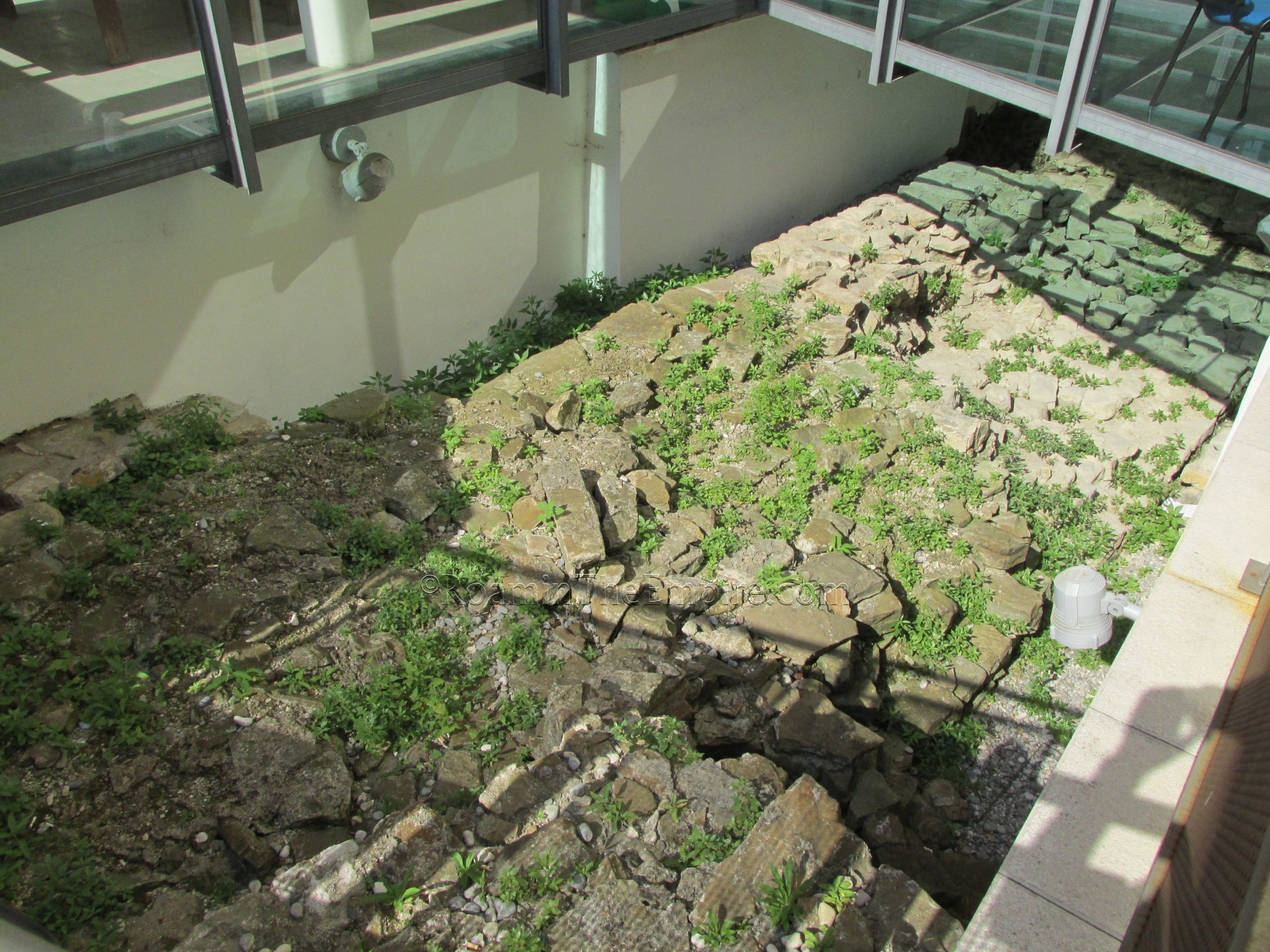
For the itinerary through Roman Tergeste, a good starting point is at Via dei Capitelli 8, in the heart of the Città Vecchia, the historic center. Located at this address, but inside and seemingly inaccessible, are the remains of a Roman olive press for the production of olive oil. The room seems to be connected to some sort of meeting space, and while there doesn’t seem to be public access to the room, there are large windows through which the press is visible. The press itself is dated to the 5th century CE and is fashioned from a block spoliated from a 1st century CE funerary monument. The remains of vegetal motifs from the funerary monument are visible on the side of the press that is facing toward Via dei Capitelli.
Adjacent to this room, on the north side, in a little side path off Via dei Capitelli are the excavated remains of a late antique road that ran near the walls of the city. This excavated area is open air and located in a public area, and as such is visible and accessible at any time without restriction. There’s a small informational sign nearby with an explanation in English and Italian, but unfortunately it doesn’t give much information about this part in particular. There’s a small section that is definitely not part of the road, but is perhaps part of the 4th-5th century CE wall circuit.
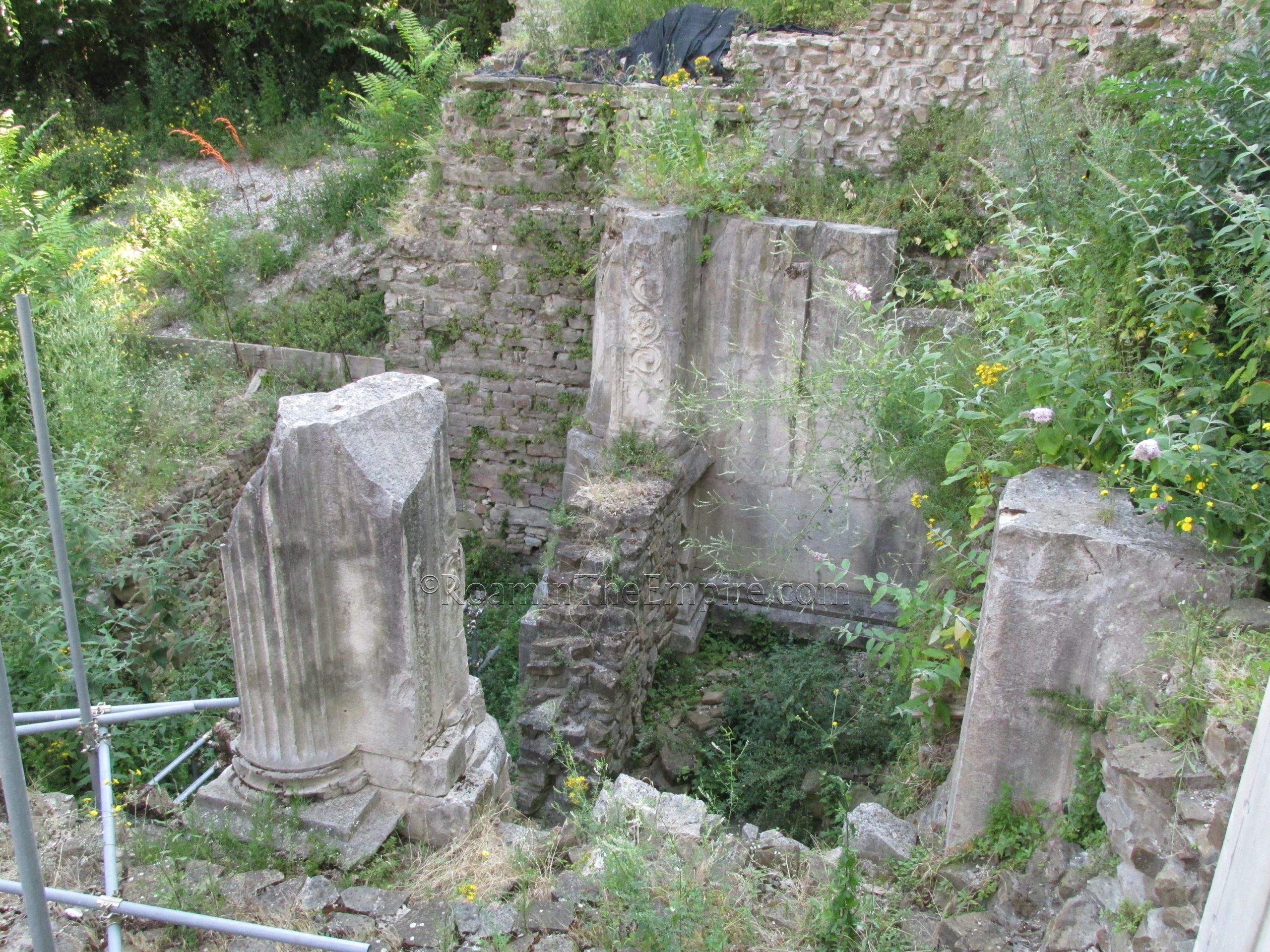
Just up Via dei Capitelli about 50 meters is another excavated section. When I visited in 2015, it was pretty overgrown, but it looks as though there have been some ongoing interventions in the area in recent years that have exposed the area a little better. As such, it is not directly accessible at present, but is pretty well visible from the public roads around it. The presence of some pillars among these remains are what gave the modern street that runs adjacent its name, the Via dei Capitelli, Street of the Capitals. This was apparently a monumental gate in the 4th-5th century wall circuit that led between a residential area and the harbor area of Tergeste. At some point after the construction, but still in antiquity, it walled over to increase the ability to defend the area, likely in response to the ongoing barbarian incursions. The form of the gate was a little difficult to discern when I visited, but, the recent improvements seem to be addressing that issue somewhat.
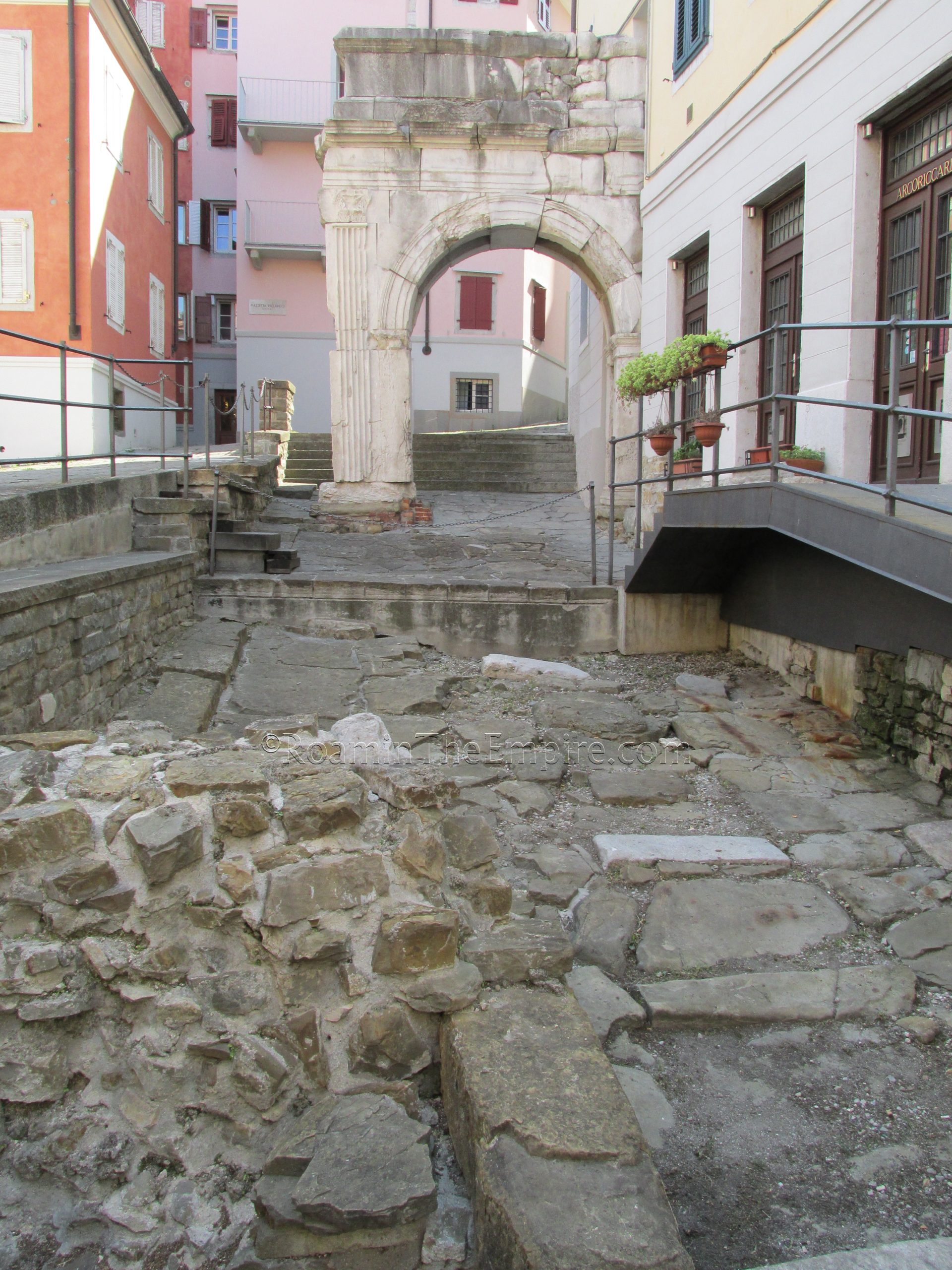
Just a bit farther up Via dei Capitelli, the road ends in Piazzetta Riccardo, which is the location of the so-called Arco di Riccardo, Richard’s Arch. The 7.2 meter tall arch is thought to have been a gate in the circuit of walls built by Octavian sometime around 32-31 BCE, though it has alternatively been dated to a bit later, possibly during the reign of Nero or Vespasian. The later dating may be the result of an improvement upon an existing portal in the city walls. A few meters in front of the arch is a sloping excavated section of a cardo that leads to another small construction about 11 meters to the south of the arch, perhaps related to the earlier incarnation of the gate in this section of the walls. The discovery of a dedication to Magna Mater here (now in the Tergeste Lapidarium) has also led some to identify the arch as being a gateway to a sanctuary associated with the goddess.
The etymology of the present-day name for the arch is interesting. Some attribute the name as relating to Richard the Lionheart, who was supposedly imprisoned in the city briefly on his journey back from a crusade. Another theory suggests the presence of the cardo which ran beneath it, in that the arch was originally referred to as the Arco di Cardo, but that eventually corrupted into Arco di Riccardo. The arch is in a public area and is accessible at any time. While the arch itself has direct access, the section of road excavated adjacent to it is fenced off, but also still visible at any time.
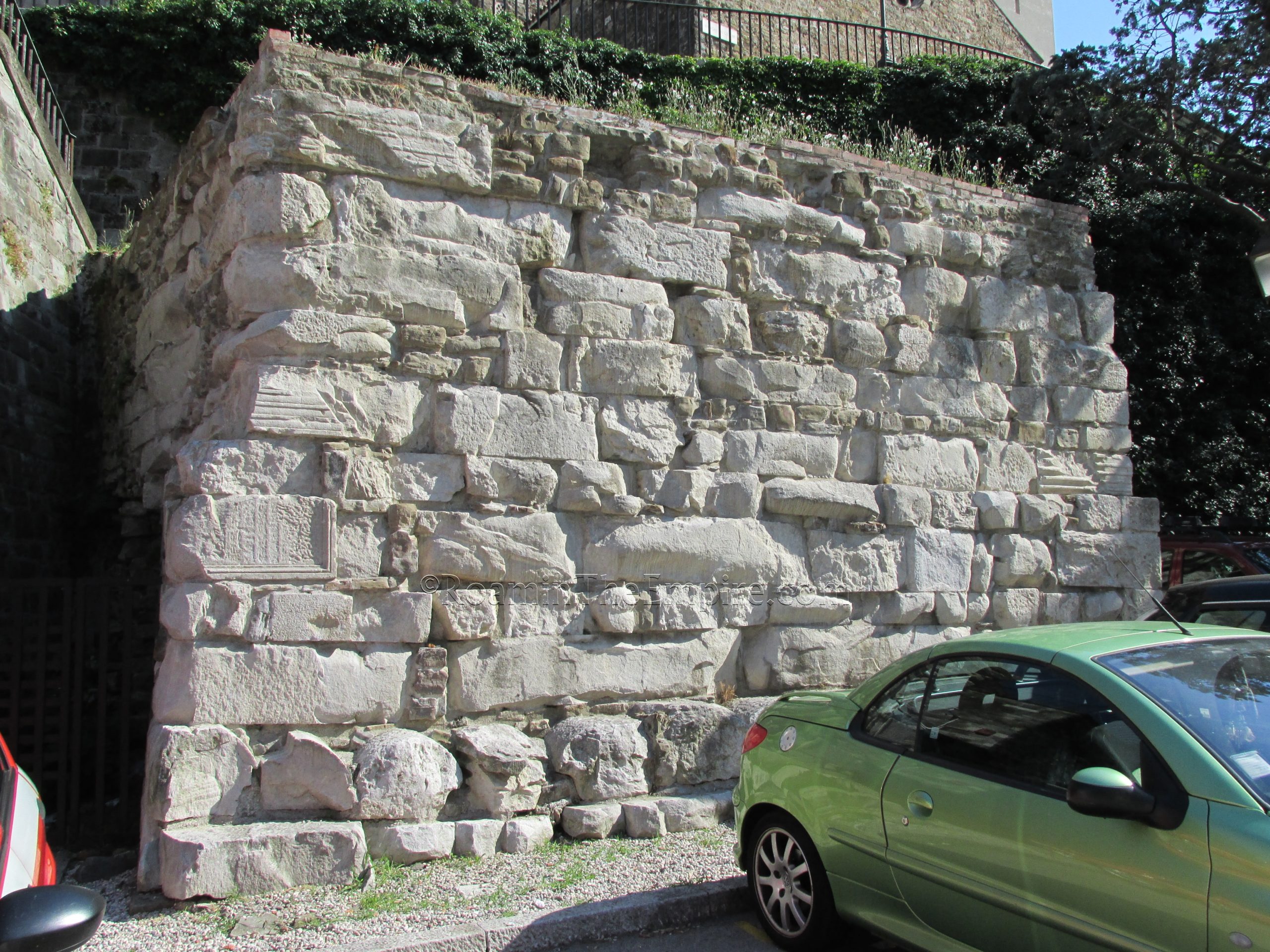
A short walk to the north, next to the Scalinata delle Medaglie d’Oro, along Via del Teatro Romano, is a square tower from the 4th-5th century wall circuit. Like many of the other monuments, this is in a completely public area, so there is no entrance or any kind of restriction in access, it can be viewed at any time. It’s pretty well defined too, which is nice. The tower is relatively free standing and not incorporated into any other structures or obscured. It’s a pretty decent presentation, though without knowing what you’re looking for, it’s easy to miss as there is not any kind of signage to point it out.
Just a few meters up Via del Teatro Romano, to the northeast, in front of the government building immediately adjacent to the Scalinata delle Medaglie d’Oro, part of the street had been dug up when I visited in 2015. Though it has since been paved over, excavations in this area have exposed structures associated with the Roman harbor of Tergeste. Though some of what I saw looked distinctly later, there definitely seemed to be some structures that might have been of Roman origin, and were probably associated with the Roman harbor constructions that have been mentioned as being present along the Via del Teatro Romano.
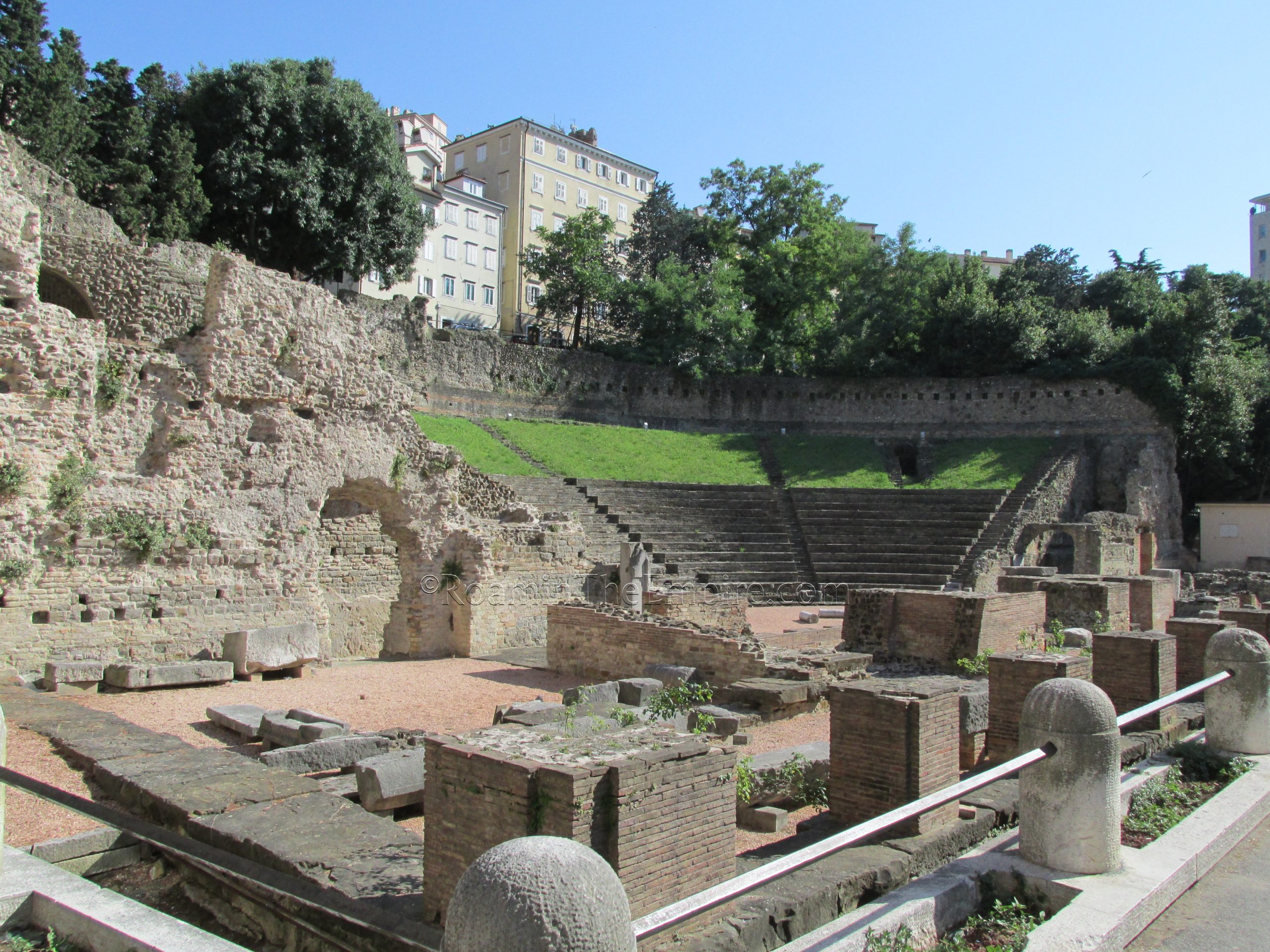
As the name of the street would suggest, the Via del Teatro Romano leads to the Roman theater, which is located a little farther on past the government building. Unfortunately, there is no direct access to the theater, but it is pretty well visible from the public areas. This, of course, also means there’s no admission restrictions for visiting the theater, it is always visible. It would be nice to get an up close look at some things, though. Not only is the theater visible form the Via del Teatro Romano, but, a road leads up and behind the theater to give views from the rear. A small park abuts the theater to the south, and from there one can look over the rear wall of the theater into the seating area.
In a not typically Roman fashion, the theater was constructed into the slope of a hill, the modern day San Giusto hill. The theater seems to have originally been constructed in the middle of the 1st century CE. Inscriptions found here (and now housed in the Tergeste Lapidarium at the Castello di San Giusto) note a reconstruction and decorative campaign carried out in the 2nd century CE and financed by one Quintus Petronius Modestus. Capacity for the theater seems to have been about 3,500 spectators.
Sources:
Appian. Illyrike, III.4.18.
Caesar. Commentarii de Bello Gallico, 8.24.
Pliny the Elder. Historiae Naturalis, 3.22.
Pomponius Mela. Chorographia, 2.55.
Ptolemy. Geographia, 3.1.
Smith, William. Dictionary of Greek and Roman Geography. Walton & Murray, 1870.
Stillwell, Richard, William L. MacDonald, and Marian Holland. McAllister. The Princeton Encyclopedia of Classical Sites. Princeton, NJ: Princeton U Press, 1976.
Strabo. Geographika, 5.1.46, 7.5.18.


